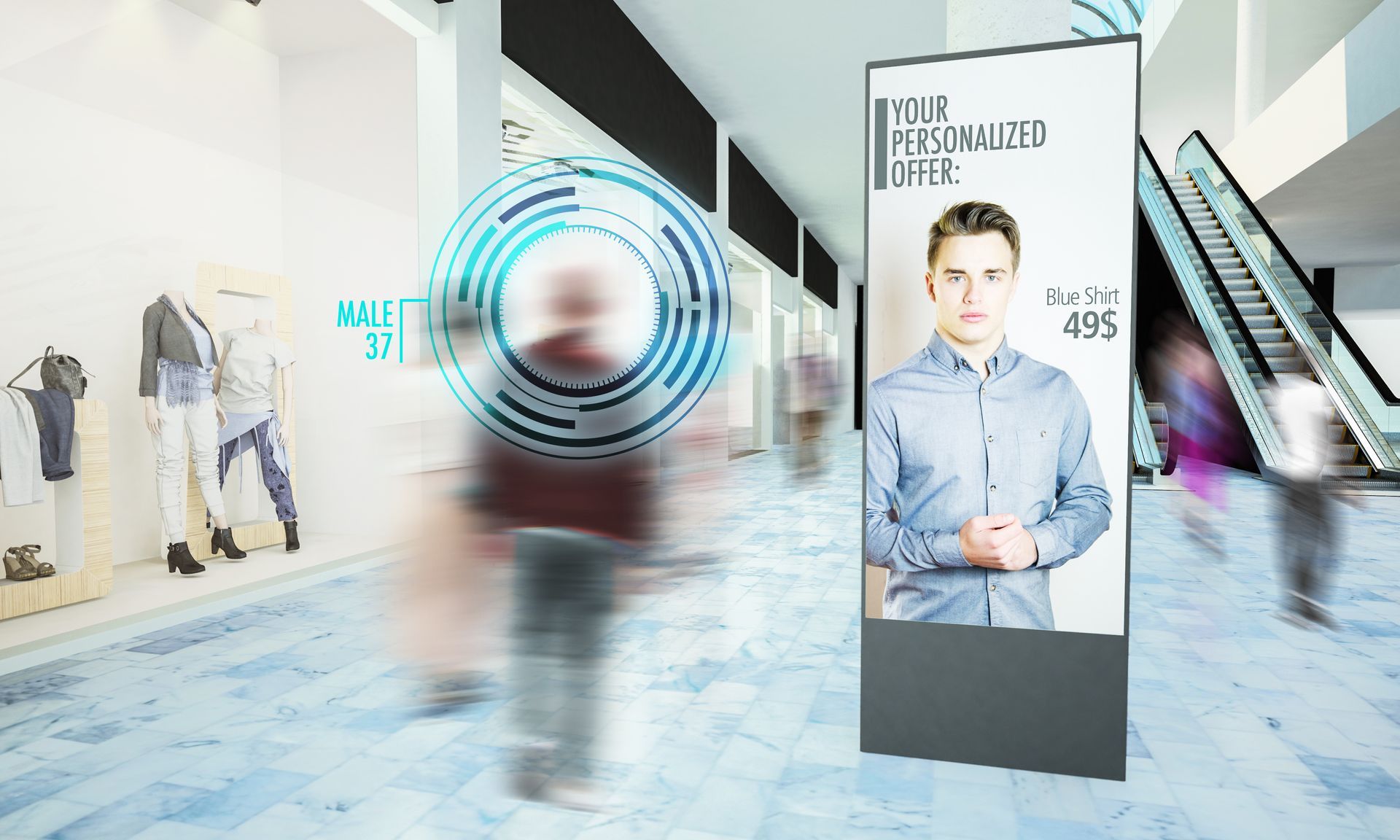The evolution of advertising: From print to personalisation

Advertising is a fundamental part of our society, playing a significant role in any business’ growth. The history of advertising is rich and colourful, and it certainly hasn’t stayed the same over time. From the first commercially printed ads in newspapers to the biometrically engineered targeted advertisements of tomorrow, advertising has come a long way.
Continue reading to discover how the trajectory of advertising evolved from a one-size-fits-all printed poster to the hyper-specific targeted adverts that brands are beginning to access today.
How it started: Print advertising
Did you know that advertising has been around for more than 500 years? The first printed advert is thought to have been published in 1472 - a piece of paper tacked onto a church door with a short paragraph advertising a book.
The evolution of advertising from then on can be directly mapped to the evolution of technology. While the invention of the printing press enabled printed adverts, mass printing revolutionised how adverts were received. By the early 16th century, adverts were being shown in newspapers, issues and periodicals.
Over time, colour was introduced, allowing for more engaging and detailed visual aids such as creative fonts, elaborate illustrations and high-quality photography. Copywriting became increasingly instrumental, and the persuasive potential of words was a complementary partner to the more modern imagery used in advertisements.
Entering the “Golden Age of Advertising”
The next stage in the evolution of advertising is the so-called “Golden Age of Advertising”, which occurred in the early to mid-1900s. This marked the beginning of a move away from print advertising, with products and services being shown on radio and, later, television. The introduction of these new mediums expanded the possibilities of connecting with a broader range of people. Advertisements were strategically placed during specific shows aimed at a demographic of people that aligned with the advert’s messaging.
However, this only scratches the surface level of targeted advertising that would be made available in the future.
The rise of digital advertising
The advent of the internet meant new channels of advertising - social media and search engines. With millions of people using social media daily, advertisers could create highly engaging content that could be seen by millions of people in hours. The sharing features, such as reposting and stories, further amplified the reach. Search engines also allowed for more strategic advertising, as content could be shown only to potential leads actively searching for a product or service related to the advertisement.
The data generated from digital advertising plays a crucial role in making ads more personalised and audience-specific. Tailoring adverts to a specific target audience yields high success rates and increased engagement, ultimately strengthening the brand-customer relationship.
Digital advertising in the offline world
Digital advertising doesn’t stop online - walk into an office, residential block or shop and you’re likely to see digital screens displaying advertisements on a loop. This is a great way for brands to get their name in front of impressive numbers of consumers. Having begun as static adverts, these out-of-home (OOH) opportunities have grown into cost-effective, looping adverts on digital screens, where sharing the space offers a less expensive option for brands. From bus shelters to billboards, OOH ads can be found in most places, but consumers have become so used to a hyper-targeted form of advertising that these more general methods can sometimes be ignored. However, looping screens are much more difficult to miss due to the movement caused by switching adverts, and they offer a cheaper method of accessing valuable advertising space.
Until recently, there had been no meaningful way of targeting these ads, making them less effective than online methods. But now, the introduction of biometrics to the advertising space has changed the game. With the biometric technology developed by Innovative Technology, businesses can optimise their ad space and target specific demographics in a far more effective way, advancing their digital OOH campaigns on modified looping screens.
Biometric technology: Forging a new path
Biometric technology brings OOH advertising a different type of sophistication to advertising. It is a less intrusive approach in comparison to online advertising, eradicating the potential unease felt by viewers. By utilising physiological features such as estimated age or gender, a more curated and personalised advertising experience can be created for customers, ultimately improving the efficiency and effectiveness of ads.
At Innovative Technology, we have developed a sophisticated biometric solution to enhance advertising at an affordable price.
MyCheckr is capable of displaying targeted ads to specific demographics based on their estimated age or gender. The all-in-one device comes complete with a screen and works with encrypted data that is never stored, so there are no concerns about data security. MyCheckr utilises biometric technology to assess which advert an oncoming consumer is most likely to be interested in, ensuring a more targeted OOH campaign. Not only does MyCheckr have the ability to estimate age, enabling more personalised adverts to be displayed on the screen, but it also helps control access to age-restricted goods and services. If a customer is estimated to be below the age of 25, the device will alert the cashier that further manual ID checks are needed. You can learn more about age assurance with biometric technology
here.
Any digital screen, such as the common digitised screens in communal residential areas, presents an opportunity to leverage this cutting-edge technology and utilise an advertising space that is affordable, adaptable and space-efficient.
We have also developed
ICU Lite, a compact device that can be connected to existing applications or media players via USB. ICU Lite performs the same function as MyCheckr and can help provide tailored advertising to the customer based on an individual's perceived demographics. Our device estimates the person's age or gender so that the most suitable content for them can be displayed on the screen. For example, if a 17-year-old walks by the device, an advertisement for a student train discount card may be shown, if an 80-year-old walks in front of the device, an advertisement for joint pain relief may be shown.
The evolution of advertising will continue as brands gain access to more innovative ways of using data and technology. Through the power of analytics, consumers gain a sophisticated retail and service experience, tailored to their wants and needs, instead of being bombarded with irrelevant or uninteresting advertisements. Biometrics are a natural progression that companies should leverage to elevate their advertising strategy.
We can all agree that we have come a long way from the piece of paper tacked to an English church door advertising a book!











